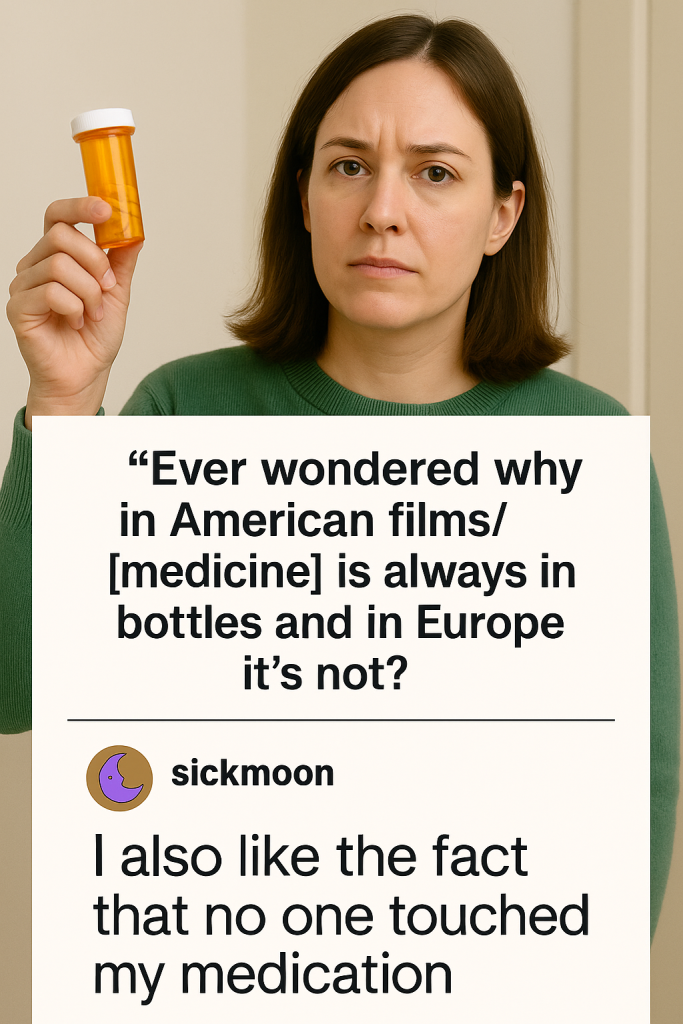In a recent social media post that has captivated users worldwide, a woman’s observation about why medicines in Europe are rarely sold in bottles like those in the United States has ignited a lively debate regarding pharmaceutical packaging norms on both continents.
The post, which quickly went viral in early 2024, highlights a largely overlooked but significant difference: medication packaging in Europe predominantly comes in blister packs or cartons, whereas the U.S. market is more familiar with plastic bottles containing loose pills. This simple remark has reopened discussions about safety, environmental impact, and healthcare culture differences across the Atlantic.
The core of the debate centers on why European pharmacies and pharmaceutical companies favor blister packs—those individual sealed compartments for each pill—over bottles packed with multiple doses. The woman’s explanation touched on important factors such as dosage accuracy, child safety, and medication freshness. In Europe, blister packaging helps minimize pill contamination and deterioration by limiting exposure to humidity and air, which can compromise medicine efficacy.
On the other hand, the U.S. system largely relies on durable bottles with child-proof caps, offering convenience in dispensing and ease of counting pills but potentially exposing medication to environmental factors once opened. Critics in the U.S. often point out concerns over prescription errors and accidental overdoses because patients might lose track of the number of pills taken when the medication is stored loosely in a bottle.
The debate has also spotlighted environmental considerations. European blister packs, although sometimes criticized for generating plastic waste, are frequently designed with recyclability in mind, and packaging standards enforce strict limits on material usage. In contrast, U.S. pill bottles, typically made from thicker plastic, contribute significantly to plastic pollution if not properly recycled. Many commenters have argued that neither system is perfect and that innovation in eco-friendly pharmaceutical packaging is urgently needed worldwide.
Furthermore, the discussion broadened to regulatory and cultural differences. Europe’s strict pharmaceutical regulations often emphasize patient safety through packaging that discourages improper use, such as tampering with or removing multiple doses at once. Meanwhile, the U.S. system places a strong focus on accessibility and ease of use, sometimes at the cost of increasing risk in medication handling.
Health professionals have weighed in, suggesting that the packaging formats reflect deeper healthcare system priorities: Europe’s approach favors caution and control in medication adherence, while the American style prioritizes flexibility and convenience.
The viral post also inspired many Americans who live or travel abroad to share their experiences, including stories of confusion when trying to navigate blister packs in European countries and the frustration of counting out pills from bottles back home. Some users expressed a desire for a hybrid system that combines the benefits of both packaging types.
Ultimately, this social media sparked debate serves as a reminder of how everyday products, such as medicine packaging, are shaped by a complex interplay of safety standards, environmental responsibility, cultural preferences, and regulatory frameworks. It also underscores the importance of ongoing conversations about how to improve patient experiences and outcomes globally.
As this debate continues to unfold online and offline, it may encourage pharmaceutical companies and policymakers on both sides to reconsider and innovate on how vital medications are delivered to consumers. For now, the conversation remains a fascinating glimpse into the different ways healthcare systems prioritize patient safety and convenience.



